PaddockTalk.com: A New Design For The 1937 Season: The Mercedes-Benz W 125 Grand Prix Car
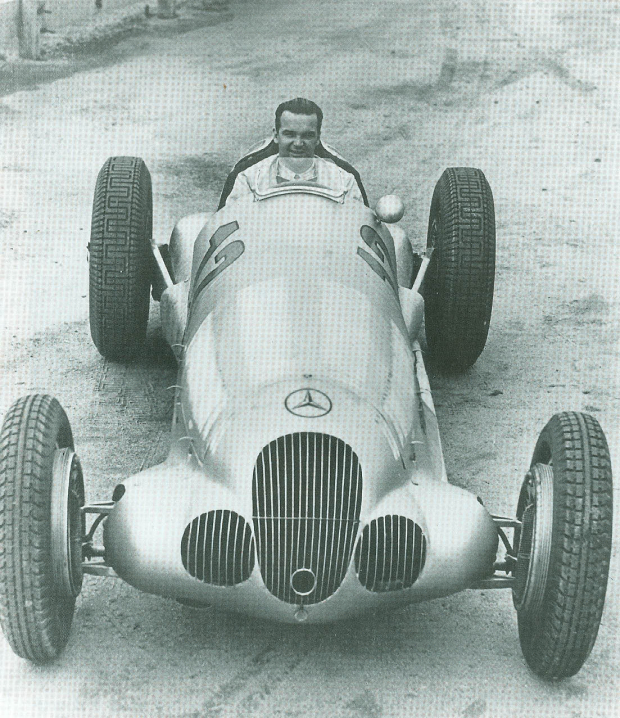
PaddockTalk.com has posted this profile of the Mercedes W 125 Grand Prix racers which ran in the 1937 Vanderbilt Cup Race.
Enjoy,
Howard Kroplick
A New Design For The 1937 Season: The Mercedes-Benz W 125 Grand Prix Car
March 14, 2012
A deafening roar erupts from the supercharged engine of the new Mercedes-Benz Silver Arrow, as it makes its debut on May 9 1937 on the Mellaha Lake track at the Tripoli Grand Prix. Under the North African sun, it quickly became clear that this was the call of the ultimate racing car of 1937. Because not only did the Mercedes-Benz W 125 clinch victory in its debut race (with Hermann Lang at the wheel), but it went on to win many other competitions that year. Among others, the car was driven by Rudolf Caracciola who secured three victories in five races for Mercedes-Benz, on his way to winning his second AIACR (Association Internationale des Automobile Clubs Reconnus) European Drivers’ Championship.
It took great passion, ingenuity and engineering expertise to build this Grand Prix racer, which was based on an entirely new design. By going to great lengths in designing the car from scratch, the Mercedes-Benz racing department demonstrated a huge amount of faith in their new competition vehicle. After all, the W 125 was developed specifically for a single year – 1937 – the fourth and final season of the 750 kilogram formula. After three years of using the W 25, Mercedes-Benz took the bold step of entering a brand new racing car just as this great era drew to a close.
International racing success for the W 125
The W 125 was introduced mainly to put the competition from Auto Union back in their place, after Bernd Rosemeyer won the European Championship for Mercedes-Benz’s rivals in 1936. And the high-speed racer certainly didn’t disappoint. Rudolf Caracciola drove it to victory in the European Championship Grands Prix of Germany (at Nürburgring), Switzerland (at Bremgarten) and Italy (at Livorno), and Manfred von Brauchitsch, in his W 125, was the first to see the chequered flag at the Grand Prix of Monaco.
There were also Grand Prix victories that did not count towards the championship, with wins for Lang in Tripoli and Caracciola at the Masaryk Grand Prix in Brno. Caracciola and von Brauchitsch came 2nd and 3rd respectively at the Eifelrennen, and Richard Seaman finished in 2nd place both at the Vanderbilt Cup in New York (only the second race in the United States that Mercedes-Benz had entered) and the Coppa Acerbo in Pescara. Von Brauchitsch was also the runner-up at the Donington Grand Prix in England – ahead of Caracciola in 3rd.
In addition to the Grand Prix cars, which were designed for endurance races, Mercedes-Benz built two lightweight W 125s especially for hillclimbs. Both the lightweight version and the Grand Prix version of the W 125 were still being raced in hillclimbs in 1938 and 1939.
Turbocharged compression of the final mixture
The W 125 was 4.2 metres long, 1.75 metres wide and only 1.2 metres high. Its wheelbase measured 2,798 millimetres, and the front and rear tracks were 1,473 and 1,412 millimetres respectively. The vehicle weight – 749 kilograms without driver, fuels and tyres – was pushing the very limits of the 750 kilogram formula.
The W 125 was powered by a 5660 cc eight-cylinder in-line engine. Each cylinder had two intake and outtake valves in a slanted arrangement, activated by oscillating levers. Two suction carburettors mixed the fuel and the air, which were then fed into a Roots compressor. For the first time in a Mercedes-Benz racing car, the supercharger was downstream from the carburettor, so it was the final mixture that was compressed.
The engine, with a peak output of over 600 bhp (441 kW), also saw action in a special variant of the W 25 that proved itself at the Avus race in Berlin. Rudolf Caracciola and Hermann Lang competed in a streamlined, closed-wheel version of the W 25, powered by the new M 125 engine. Lang claimed victory in the car, while Richard Seaman finished 5th in the standard W 125 Grand Prix racer with its open wheels. This experiment with a streamlined car in 1937 provided Mercedes-Benz with important insights for the development of later racing cars and rekordwagen (record car) with fully streamlined bodies.
In January 1938, Rudolf Caracciola achieved the fasted speed ever recorded on a public road in the aerodynamically optimised rekordwagen version of the W 125. The car, powered by a 736 bhp (541 kW) V12 engine, achieved 432.7 kph over a kilometre and 432.4 kph over a mile (1.609,30 m) on the Frankfurt–Darmstadt autobahn (motorway) – both from a flying start.
Visionary engineering details
The W 125 was largely based on the expertise of Rudolf Uhlenhaut, who was appointed chief engineer of the newly formed Mercedes-Benz racing team in the middle of 1936. Its backbone consisted of an ultra-sturdy frame made from nickel-chrome molybdenum steel, with four crossbars. The W 25’s box section frame was also dispensed with in favour of an elliptical version. This increased the torsional stiffness of the vehicle, without its engine, to three times the amount of its predecessor.
The front wheels were steered by double wishbones with helical springs, as in the celebrated 500 K and 540 K production models. The wheels at the rear were mounted on a De-Dion double-jointed drive shaft providing constant camber adjustment, with longitudinal torsion bar springs and hydraulic lever-type shock absorbers. Shear and braking torque was transferred to the chassis by lateral links.
After extensive test drives on the Nürburgring circuit, Uhlenhaut opted for a revolutionary chassis design. He made the bold and visionary decision to replace the customary principle of hard springs and minimum damping with the exact opposite. The W 125 featured soft-sprung suspension and exceptionally long spring travel, with a high level of damping, setting the pattern for today’s Mercedes-Benz sports cars. The most distinctive feature of the W 125 were the three cooling openings at the front.
Memories of a triumphant season
1937 was to be the only year in which the W 125 competed in Grand Prix races. In 1938, Mercedes-Benz replaced it with the W 154 to comply with the new 3000-cc formula. Nevertheless, the Mercedes-Benz experts recognised the true importance of the technology that made this 1937 racing car so successful. For example, chassis engineer Max Wagner used virtually the same groundbreaking frame for the new W 154 as had been used in the W 125.
The legend of this iconic racing car, which made its debut in 1937, burns as brightly as ever. Louis Sugahara wrote in his definitive work on Mercedes-Benz Grand Prix vehicles in the period from 1934 to 1955: “The W 125 is an exceptional racing car, which fully deserves its very special place in the annals of motorsport history.”
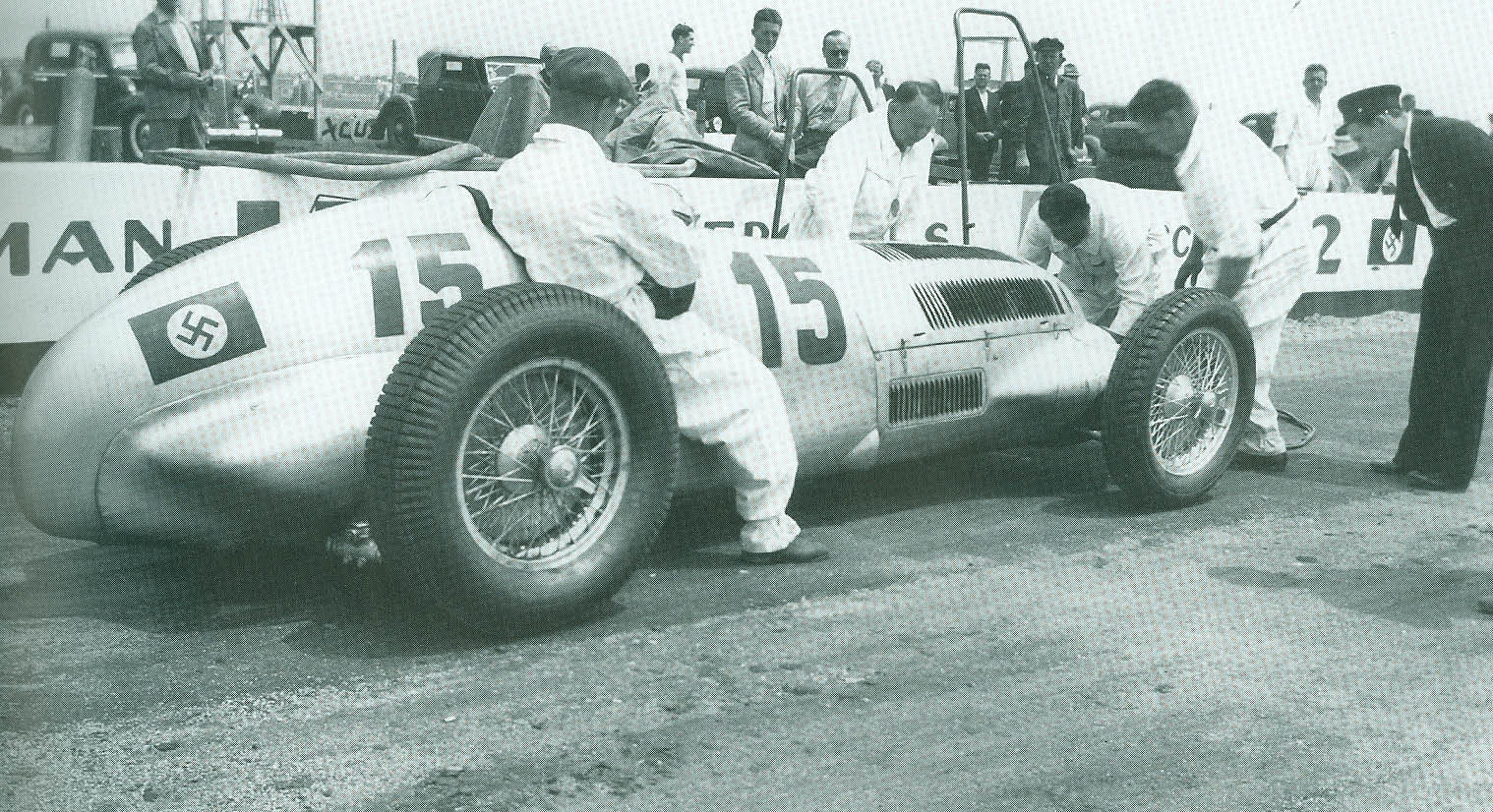 The #15 Mercedes was driven by British diver Richard Seaman who finished second only 50 seconds behind Bernd Rosemeyer's Auto Union.
The #15 Mercedes was driven by British diver Richard Seaman who finished second only 50 seconds behind Bernd Rosemeyer's Auto Union.
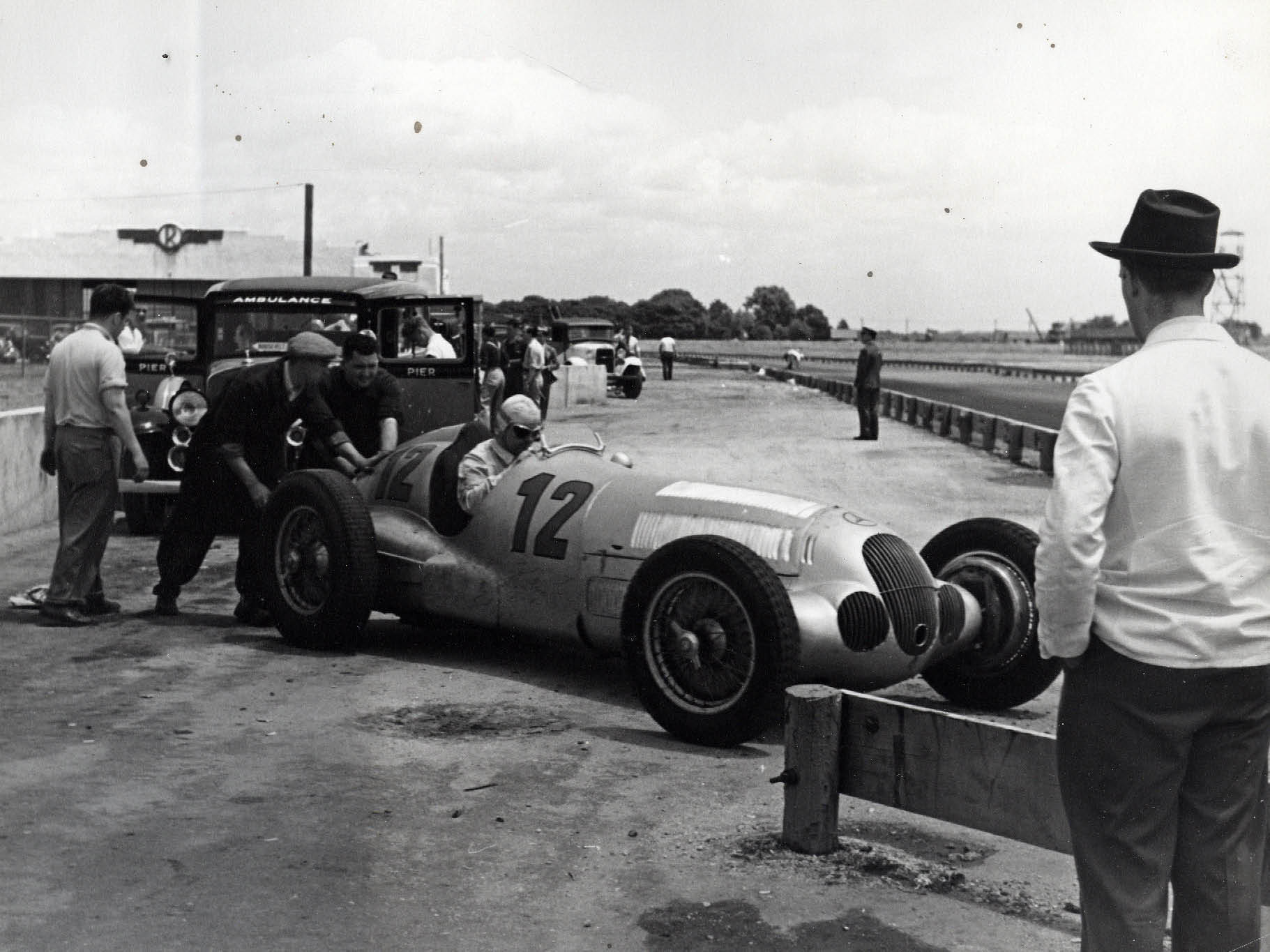 The other Mercedes W 125 in the race was driven by Rudolph Caracciola. The car broke its supercharger in the 17th lap and finished 25th.
The other Mercedes W 125 in the race was driven by Rudolph Caracciola. The car broke its supercharger in the 17th lap and finished 25th.
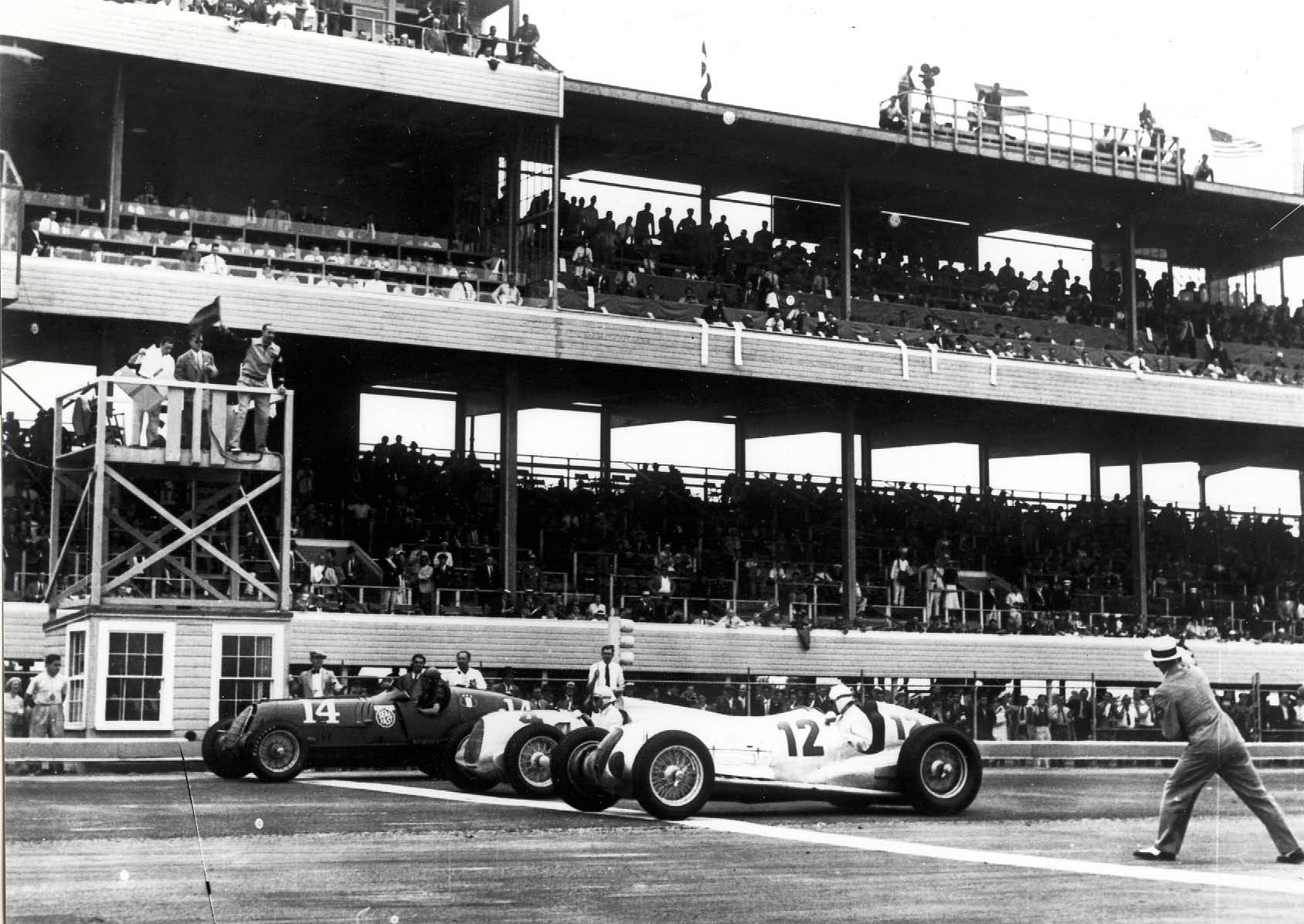 Caracciola's Mercedes at the starting line next to Rosemeyer's #4 Auto Union and Rex Mays #14 Bowes Seal Fast .
Caracciola's Mercedes at the starting line next to Rosemeyer's #4 Auto Union and Rex Mays #14 Bowes Seal Fast .
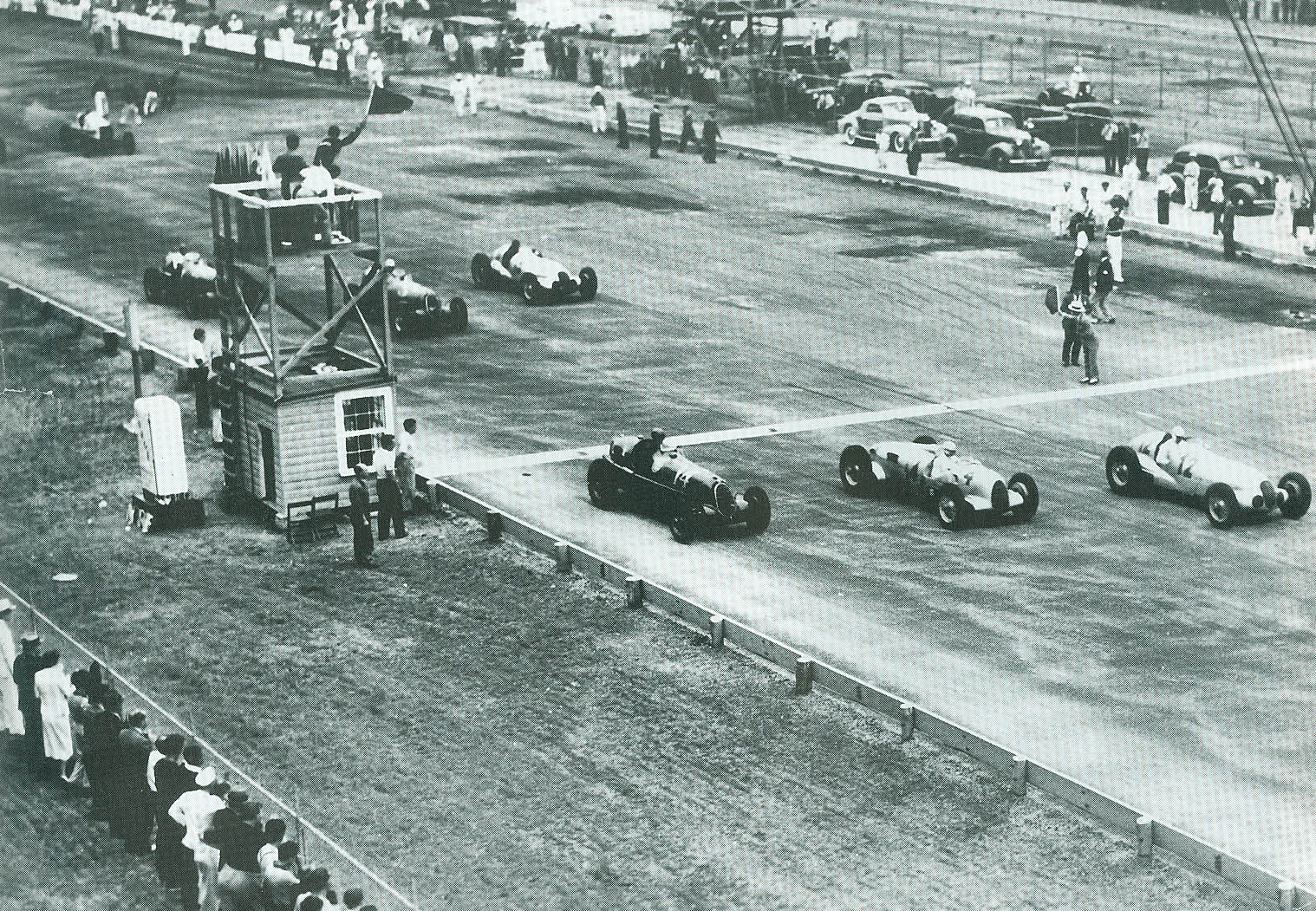 The start of the 1937 Vanderbilt Cup Race.
The start of the 1937 Vanderbilt Cup Race.
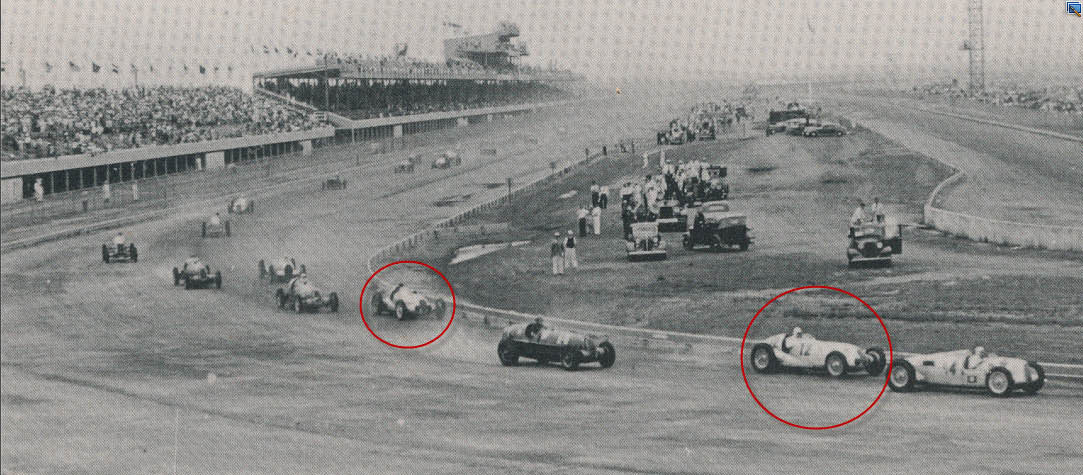 After the first turn, the Mercedes were running second and fourth.
After the first turn, the Mercedes were running second and fourth.

Comments
Dear Howard-
Always look forward to any info from your emails we receive but the material on the Silver Arrows always throws us in an frenzy. Thank you for that and good luck on the Chrysler resto. That car was waiting for you all these years to get her.
Best of luck to you
Jack